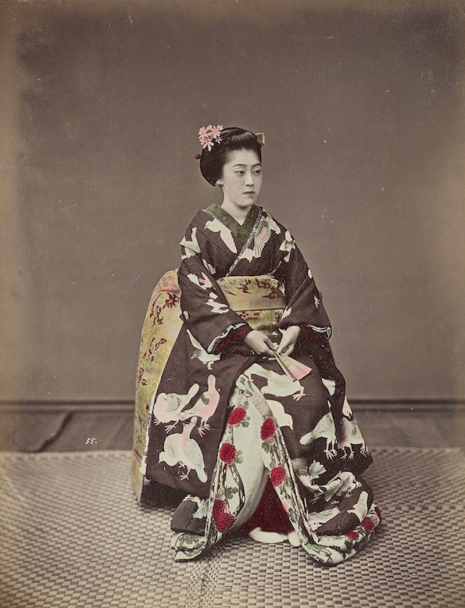
‘Seated Woman.’
Kusakabe Kimbei (1841-1934) was a Japanese photographer who learned his trade as an assistant to Felice Beato, the pioneering photojournalist who came to Japan to document its people and their culture. Japan had just been through a civil war that led to the restoration of imperial rule. The country had also been forced—under the shadow of U.S. Navy battleships—to open trading routes with America. This new trade brought technology, tourism, and for some, the opportunity to turn imposition to advantage. And that’s what Kimbei did.
After learning all that he could from Beato, Kimbei established his own photographic studio in Yokohama in 1881. Kimbei had a natural talent for art and had spent part of his time coloring Beato’s photographs. Hand painting photographs was a way of redefining the medium and adding “an artistic Japanese intervention to Western technology.”
Once he established his studio, Kimbei plied his trade producing souvenir photographs of Japanese culture—samurais, geishas, tea drinking, musicians, everyday workers. These photographs maintained Japanese traditions at a time of great social, political, and cultural change when it seemed the very fabric of the country was being irredeemably changed. Among the many pictures Kimbei produced was a large set of portraits of Japanese women and their daily lives. But there’s an interesting thing going on in these photographs. What at first appears to be a straightforward representation is often an idealized or Western view of Oriental life intended for foreign consumption. Yet, at the same time, Kimbei transcends this view by use of color and composition.
This balancing between Japanese and Western media parallels national tensions concerning the degree that Japan should adopt foreign tools and technology, contrasted with a desire to preserve indigenous traditions and practices.
Kimbei became one of the most famous and respected Japanese photographers of his era, and his work gives a rare insight into Japan of the late 19th-century.
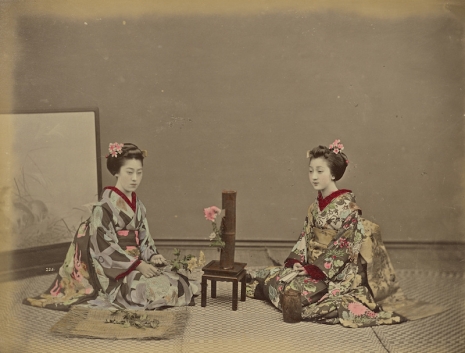
‘Flower Kept Alive by Putting in Water.’

‘Girls Carrying Paper Lantern in Winter Evening.’

‘Group of Young Women.’
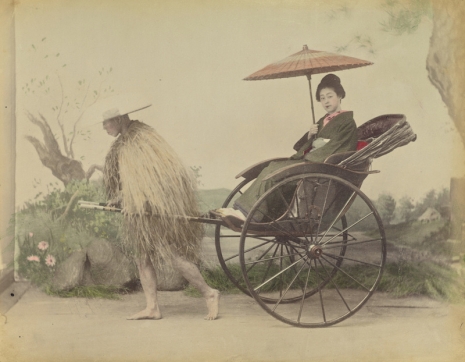
‘Woman with Parasol Posed Being Pulled in a Jinrikisha by a Man Wearing a Straw Rain Coat.’
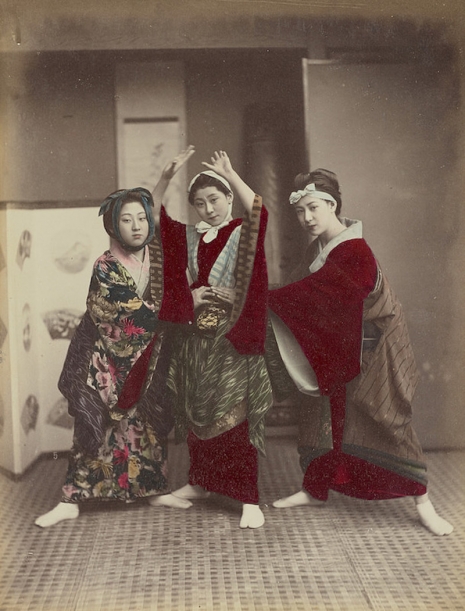
‘Dancing Party.’
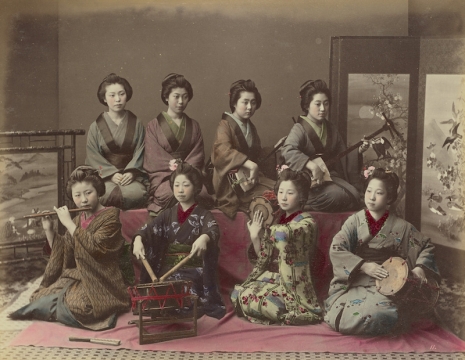
‘Playing Samisen, Tsudzumi, Fuye and Taiko.’
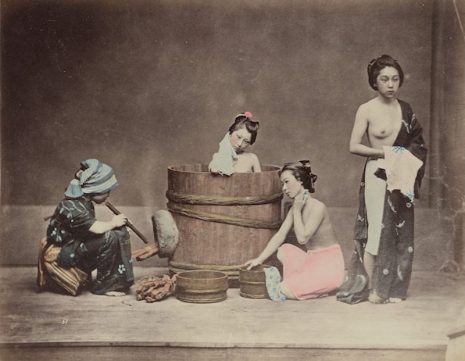
‘Home Bathing.’
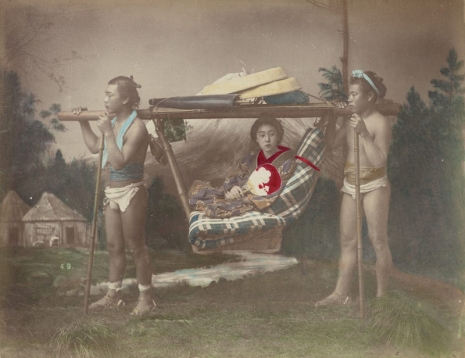
‘Kago Travelling Chair.’

‘Woman Reclining with Pipe.’

‘Writing Letter.’

‘Girls Dancing.’

‘Dancing.’

‘Hairdressing.’
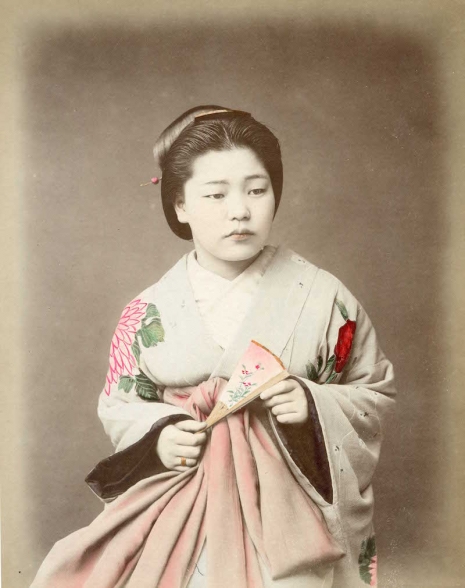
‘Woman and Fan.’

‘Wind Costume.’
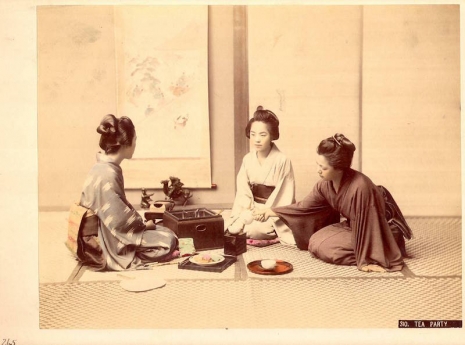
‘Tea Party.’
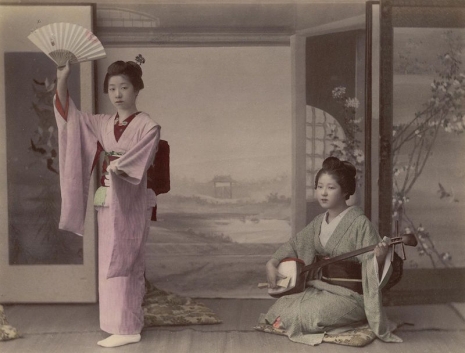
‘Two Women Entertainers.’
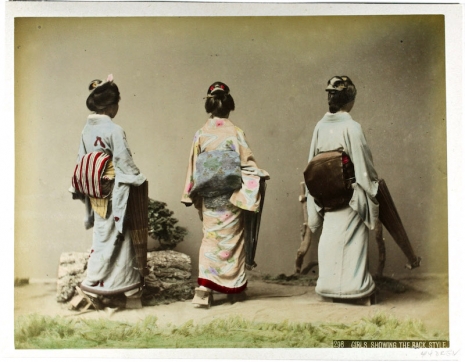
‘Girls Showing the Back Style.’

‘Geisha.’
Via Public Domain Review, Red List, and WikiCommons.
Previously on Dangerous Minds:
The last of the Samurai: Beautiful hand-colored photographs of the warriors and their courtesans
Samurai Girl Power: Mess with these female Japanese warriors and you’ll regret it